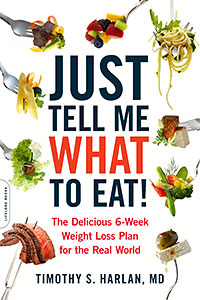Healthy Eating for Kids
Children who are fifteen and older may be treated as adults for the purposes of diet.
 For those children ages fourteen
and below, it is best that you consult your pediatrician
to find out the appropriate caloric intake for your child.
For those children ages fourteen
and below, it is best that you consult your pediatrician
to find out the appropriate caloric intake for your child.
For smaller children the following applies (but again, it's best to talk to your pediatrician):
The average 5 to 8 year-old needs about 40 calories per pound of weight, or 1,800 - 1,900 calories per day. Activity is going to have a lot to do with this, however. If your child is less active, they might need only 1,400 calories and if they are very active, they will need more.
Most dietitians recommend more than just three meals per day for kids. A good strategy is to use 1,500 calories per day as the baseline and then supplement with nutritious snacks for your children when they are active. This means that your kids can eat the same healthy diet as you with adjustments for healthy snacks.
For healthy snacks consider the following ideas.
For an active day:
A half or whole peanut butter sandwich on whole grain bread
A half or whole grilled low-fat cheese sandwich using whole grain bread
Fruit and nut blend trail mixes (check the package for added sugar and salt)
A bowl of healthy cereal
Fresh veggies cut up and served with a dipping sauce and cubes of low-fat cheese
Low fat cottage cheese with diced fresh or canned fruit
For a treat:
Fresh fruit
Jello Sugar Free Pudding cups
Jello Sugar Free gelatin cups
Yogurt cups (make your own with 1/2 cup non-fat yogurt, a teaspoon of honey and fresh fruit
Graham crackers
1/2 cup low-fat sorbet
1/2 cup low-fat frozen yogurt
A root beer float made with sugar free root beer and a half cup of low-fat, low-sugar vanilla ice cream
Frozen sugar-free fruit juice bars
If you have any concerns about your children's weight, do check with their pediatrician. He or she can help you evaluate growth patterns, as well as height and weight for age and activity levels.
Related Articles
More Fruit, Less Junk
There's a lot of concern about childhood obesity, and justifiably so: over 1 in 3 children (including adolescents) are at least overweight, if not obese. The Centers for Disease Control estimates that as of 2008, 20% of children between the ages of 6 and 11 are obese, while 18% of kids 12-19 are obese.
A Little More Fiber Can Help You Reduce Your Risk of Diabetes
More and more children and adolescents are considered overweight or even obese,
leading to a related rise in the cases of insulin resistance, pre-diabetes,
and type 2 diabetes among children.
Proposed Nutrition Standards for School Foods
School age kids spend most
of their day at school, where the foods that are available
to them can range from healthy, nutritious foods in the lunchroom
to sodas and candy from vending machines.
Grandparents also important to children's weight
The obesity epidemic
is not limited to Western countries; China's growing economic
development has had its impact on that country's waistline,
as well.
Kids' weight control a family affair
We know that overweight and obese
children are much more likely than normal-weight children
to grow up to be overweight and obese adults. Studies
have found that when parents take sole responsibility
. . . .
Magazine articles on weight loss and their impact on teens
Studies of
adolescent behavior indicate that about 10% of all high school
students are trying to lose (or at least maintain) weight
by using diet pills, powders or liquids.
Want your kids to eat more fruit?
I've written before about how few children
and adolescents are eating their recommended five servings
of fruit and vegetables per day. Researchers at Yale University
recently discovered a simple way to get kids to eat more
fruit
Like parents, like kids
Experts in pediatrics have identified four important
activity and dietary recommendations for children's health.
Kids also eat more while watching TV
I wrote not long ago about how distractions
such as music during a meal will contribute to adults eating
more than they would without music on,
and you've probably heard the estimates that children consume
about 25% of their daily meals in front of the television.
How much television do your kids watch?
A recent study from the University
of Missouri followed 8,000 children from kindergarten through
third grade. The children were participants in the Early Childhood Longitudinal
Study - Kindergarten Cohort, a sample of children from schools nationwide
who entered kindergarten in 1989.
Adolescents low in fruits and vegetables
We've known for a while that
a diet high in fruits and vegetables can help reduce your
risk of many chronic diseases, including heart disease, cancer,
and diabetes. Since healthy eating habits are most easily
set early in life, childhood and adolescent eating habits are becoming an
important topic in dietary research.
Eating healthy important for kids' weight, too
It's clear that what's
known as a "Western" diet, comprised of high-fat foods, refined
grains, and lots of sugar, is one of the primary causes of
the rise in obesity levels throughout the Western world. Most studies of
dietary patterns, however, are focused on adults and their diets while in
adulthood.
Impulsiveness may help explain childhood obesity
A great deal of attention
is being paid to childhood obesity. In the press there are
many causes put forth including the rise of fast food, consumption of soda
and decrease in activity.

